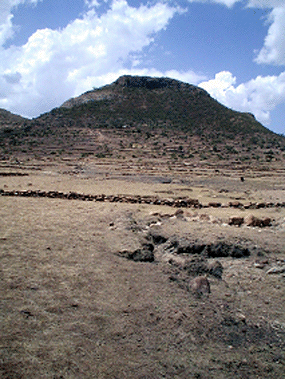Traditional Techniques
Local strategies of soil and water conservation have received increasing interest in research since the 1970s. Many studies ascertained a wide array of indigenous techniques that have traditionally enabled a more sustainable protection of water and soil resources than today (e.g. 32, 33, 25). Like overall traditional knowledge, these traditional soil and water conservation measures are often opposed to modern techniques because of their characteristics, which are noted in the following.
The techniques include physical, biological and agronomic measures that are often applied in combination. Measures are often selected and implemented with the aim of fulfilling several goals at the same time [25].
The methods of resource use are highly influenced by cultural heritage and have been developed and adopted across many generations [25]. Thus, a gradual internalisation of traditional knowledge has become possible [11]. The construction of traditional stone bunds is an example (see figure). Initially, these were possibly just made of stones that were collected off agricultural fields and piled up in lines at the field boundaries. After farmers had observed positive effects, such as the deposition of sediment uphill or the reduction of surface runoff, these stone bunds were purposely constructed, e.g., in Ethiopia or Kenya or later on as the central part of a complex ‘Tabia system’. Stone bunds are heightened and extended step by step. This leaves scope for changes. Correspondingly these traditional soil and water conservation techniques are characterised by a high level of flexibility and adaptability to local conditions (e.g., availability of building materials such as wood or stones or labour) [11].
Why has this traditional knowledge received increasing attention in the research of several disciplines? This is explained on the next learning page 'Significance of traditional knowledge in Watershed Management'.



